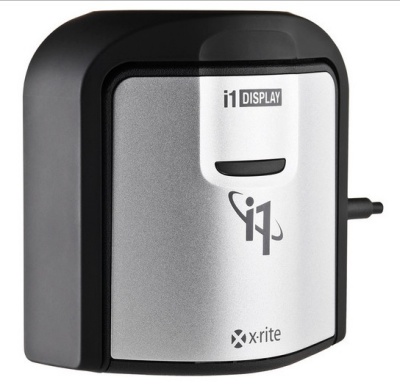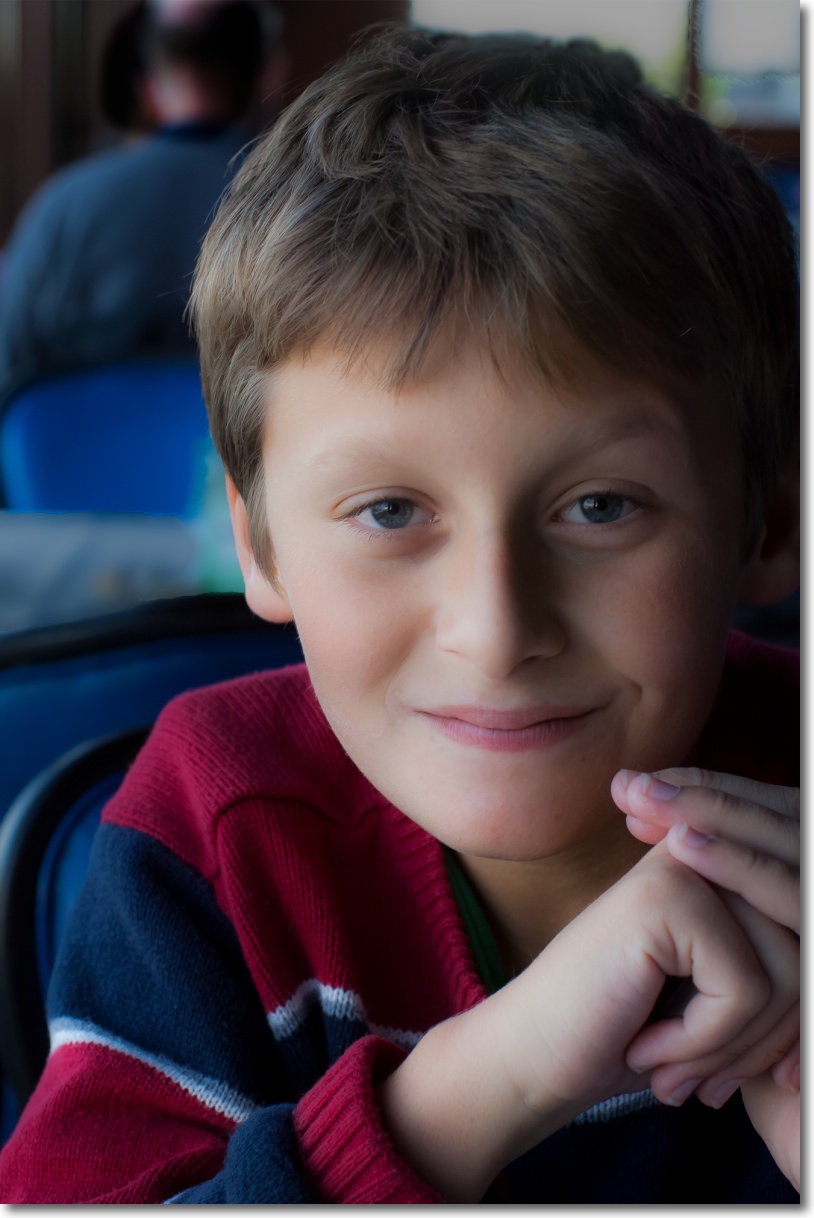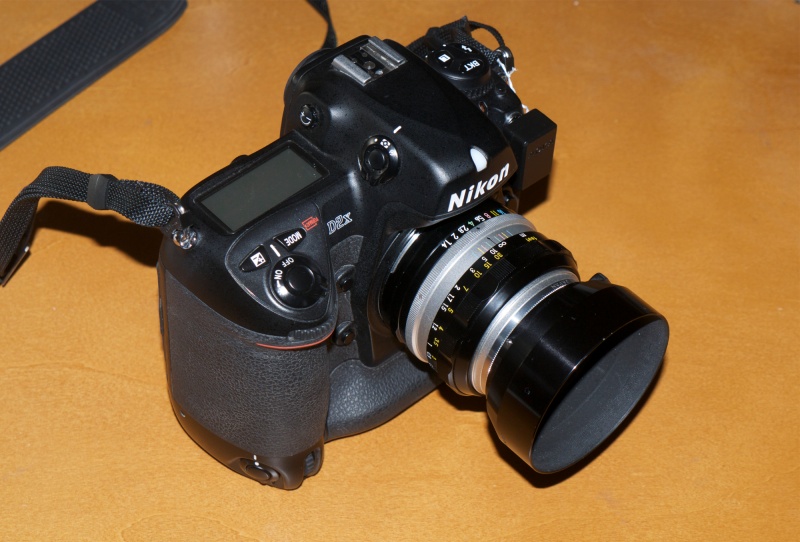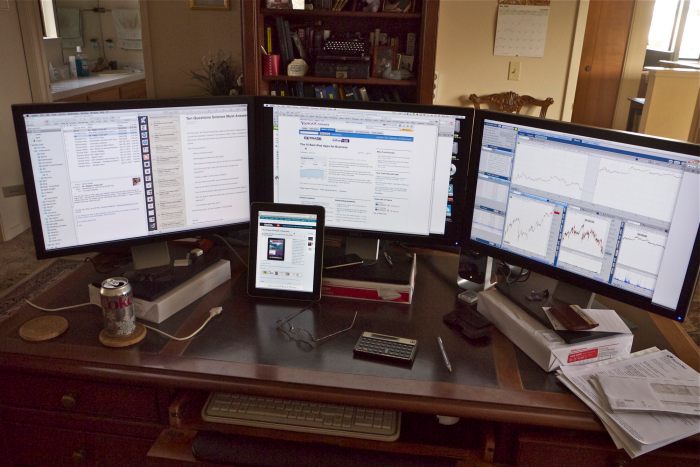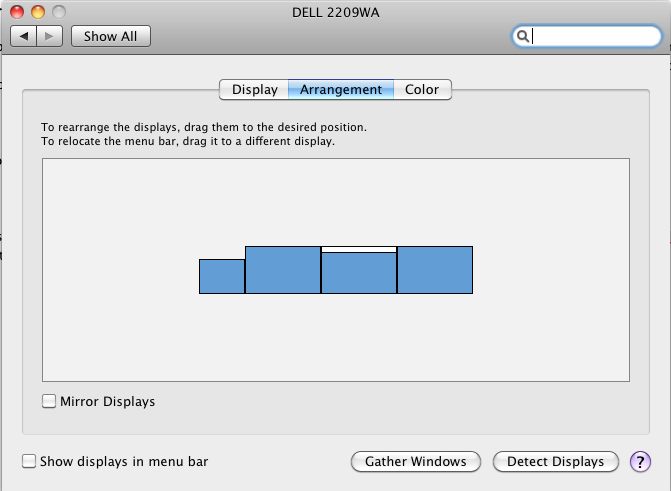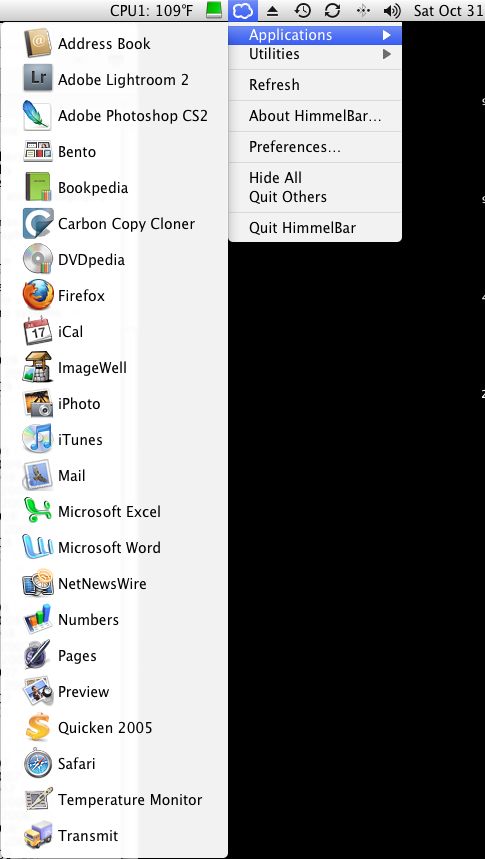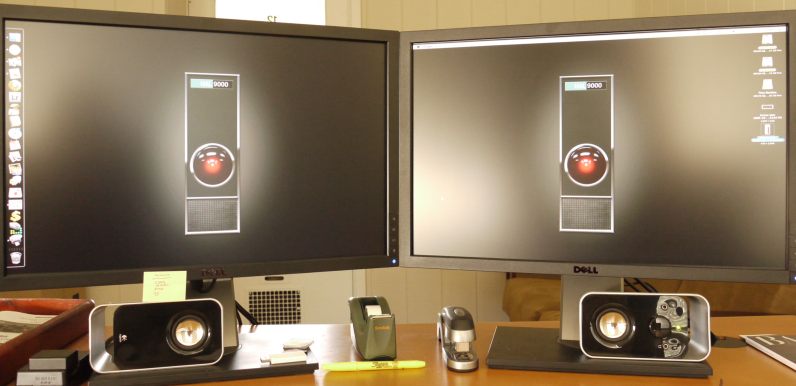Bringing in the New Year.
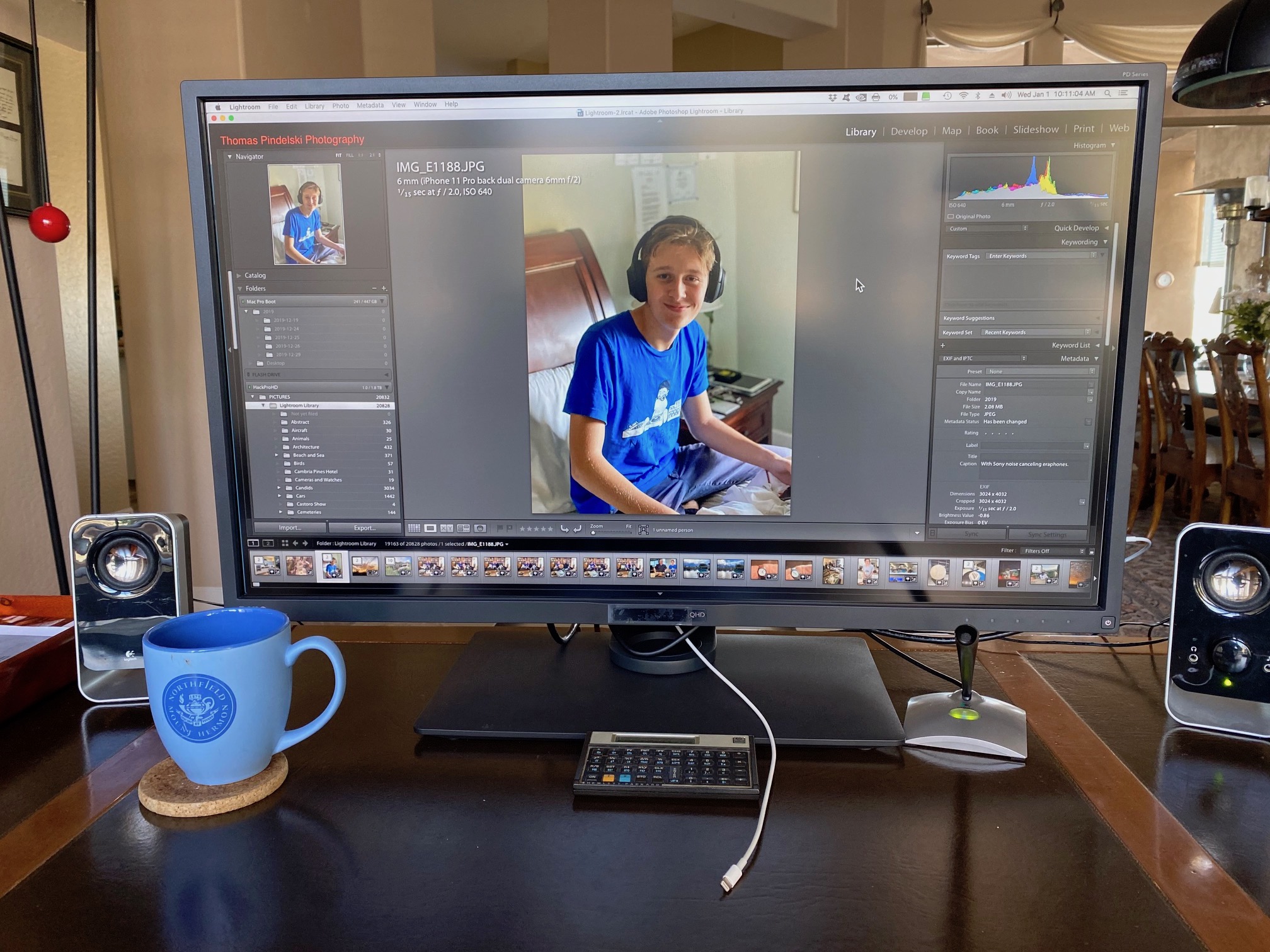
The 32″ BenQ monitor running Lightroom. Strong daylight over my shoulder does not distract.
My Apple 30″ Cinema Display was bought ‘pre-owned’ 5 years ago and saw daily use.
Elegantly housed and with a minimum of controls, it was easily calibrated, did not drift over time and was a joy to use. The 16:10 aspect ratio was squarer than the more common 16:9 and worked well with my applications and needs.
It failed at Christmas and was over a decade old. Originally selling for $3,300 I had paid just $400 for mine and that’s what its replacement, the BenQ PD3200Q cost new from Amazon. It went into service yesterday and comes with a 3 year parts, backlight and labor warranty. There are cheaper displays in the 32″ size range but BenQ has a tradition of catering to photographers and the display comes pre-calibrated, with the calibration chart included, no less:
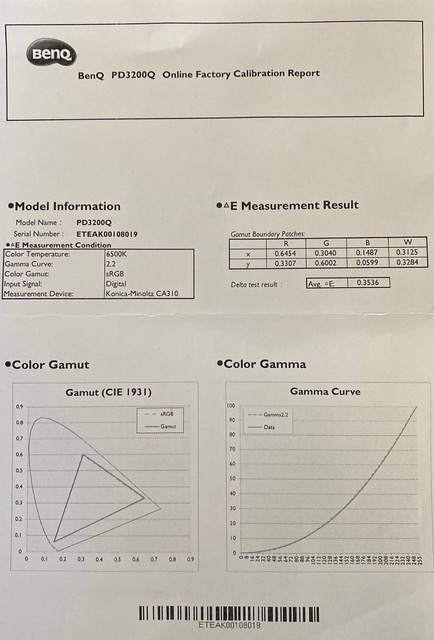
Included calibration chart for my 32″ BenQ monitor.
Sadly, the aspect ratio is 16:9, and 16:10 no longer seems to exist. The stand adds a counterbalanced height adjuster to the tilt function, the latter shared with the old Apple Cinema Display.
Out of the box I found the Brightness setting of 72 too bright and turned it down using the easy to use touch buttons to 56. These buttons are located on the bottom right of the bezel and are only lit when being adjusted. To their right is an illuminated off-white on-off indicator which turns orange when the display is in sleep mode. The display’s power supply is integrated; there is no separate power supply transformer.
I measured illumination uniformity across the screen – extreme edge, center edge, center. There was no noticeable difference.
While this is a 2560 x 1440 display, I much prefer the larger font setting, thus:
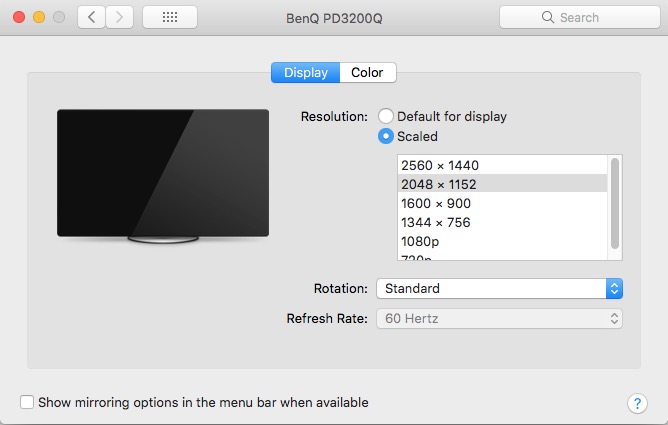
Scale setting for the monitor.
This is yet another reason not to spend money on a 4K primary display, where the font size is ridiculously small.
There is a plethora of outlets and pass-throughs sprinkled along the side, rear and underside of the panel. The near useless ‘instruction sheet’ – one of those ‘no words’ things beloved of the Germans and now the Japanese – shows 2 USB3 power-in sockets, 4 USB3 power-outs, line-in and line-out (for external speakers), a Hockey Puck connector and four video outputs – DP, HDMI, DVI and mini DP. The DP cord provided is terminated with a mini DP connector, but I prefer the more robust DP to DP locking connectors and spent an additional $7 at Amazon for one. HDMI and DVI cables are also provided, so there is no lack of video connectivity. There’s an instruction manual on a provided CD (CD? Really?) but I did not bother looking at it.
The Hockey Puck is an exercise in redundancy:
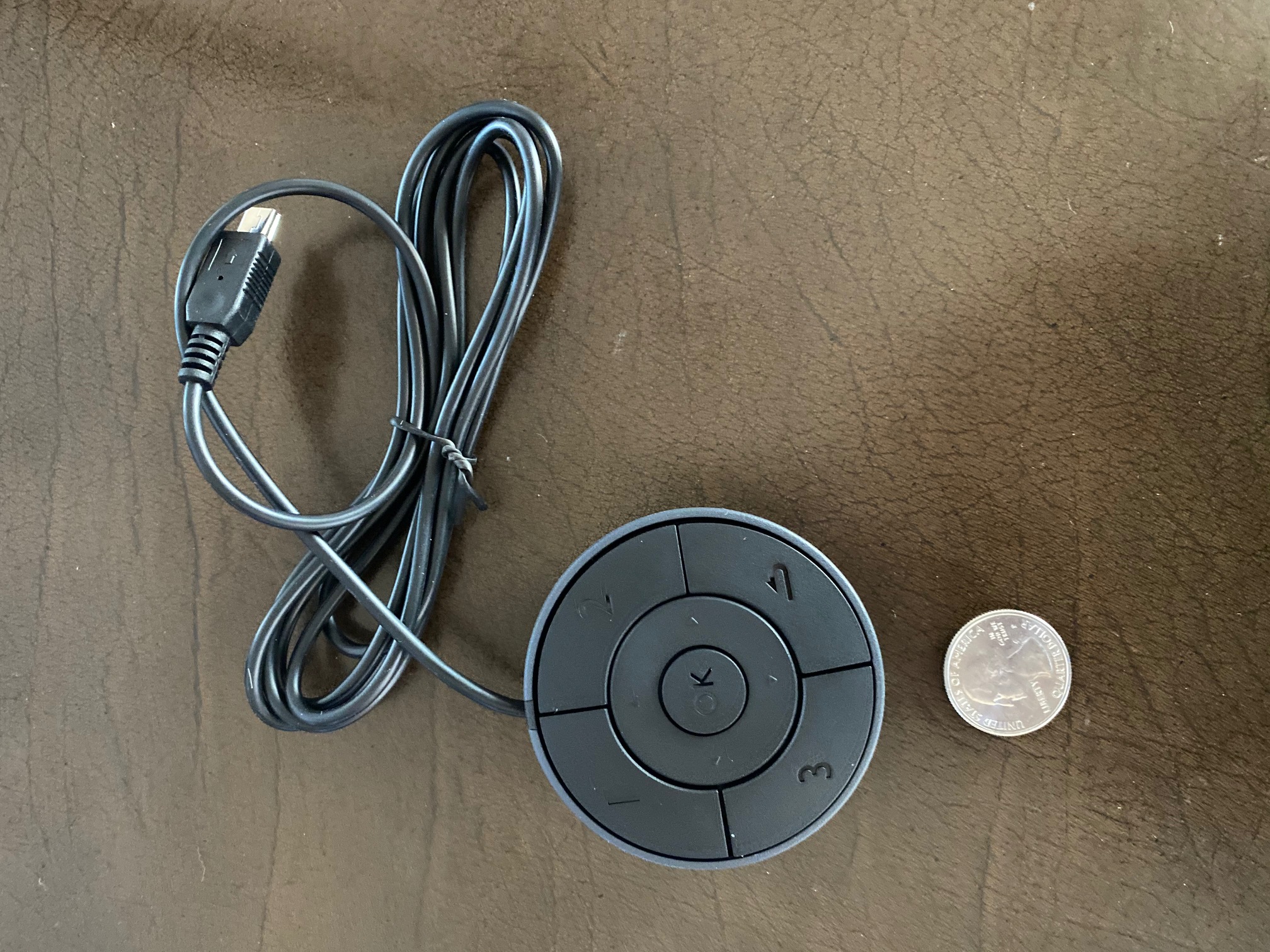
The Hockey Puck.
The purpose is to activate and use the on screen display menus to adjust the monitor. As this is done once in a blue moon, and is easily accomplished using the touch panel referenced earlier, this is just so much useless clutter on your desktop, serving no useful purpose.
How is the color balance and fidelity? Perfect out of the box. This excellent performance out of the box is reason alone to pay a little more for this display. There is no light leakage and the construction quality, fit and finish are excellent. The display surface is semi-matte and does not suffer from specular reflections.
Interestingly, the side panel also has an SDHC socket for your camera’s storage card. As my only camera is now the iPhone 11 Pro, which I connect to the Mac Pro using a Lightning cable, this adds no useful function for me but will be appreciated by many still using old technology.
So what’s not to like? Like every pitch black device in the home – hi-fi gear, TVs, toasters and so on – it’s butt ugly. The stand is an exercise in industrial competence and has all the charm and warmth of one of Brunel’s inventions from the Industrial Age. The screen will rotate through 90 degrees and as it’s already huge at 32″ diagonally, that’s just plain dumb, and will place lots of strain on your connecting cables. There are built in speakers but even modest external ones (I use old Logitechs) will be better.
I drive the display using an Nvidia GTX980 video card in my 2010 Mac Pro. I checked it with the ancient Nvidia GT120 using a mini DP connector and it works fine, though the video rendering can be slow with this prehistoric piece of hardware.
Gaming use? Search me and look elsewhere. This site is for grown-ups, not children.
For photographers needing a traditional display which comes properly calibrated, and who do not want the small fonts that 4K delivers, the 32″ BenQ PD3200Q is recommended.
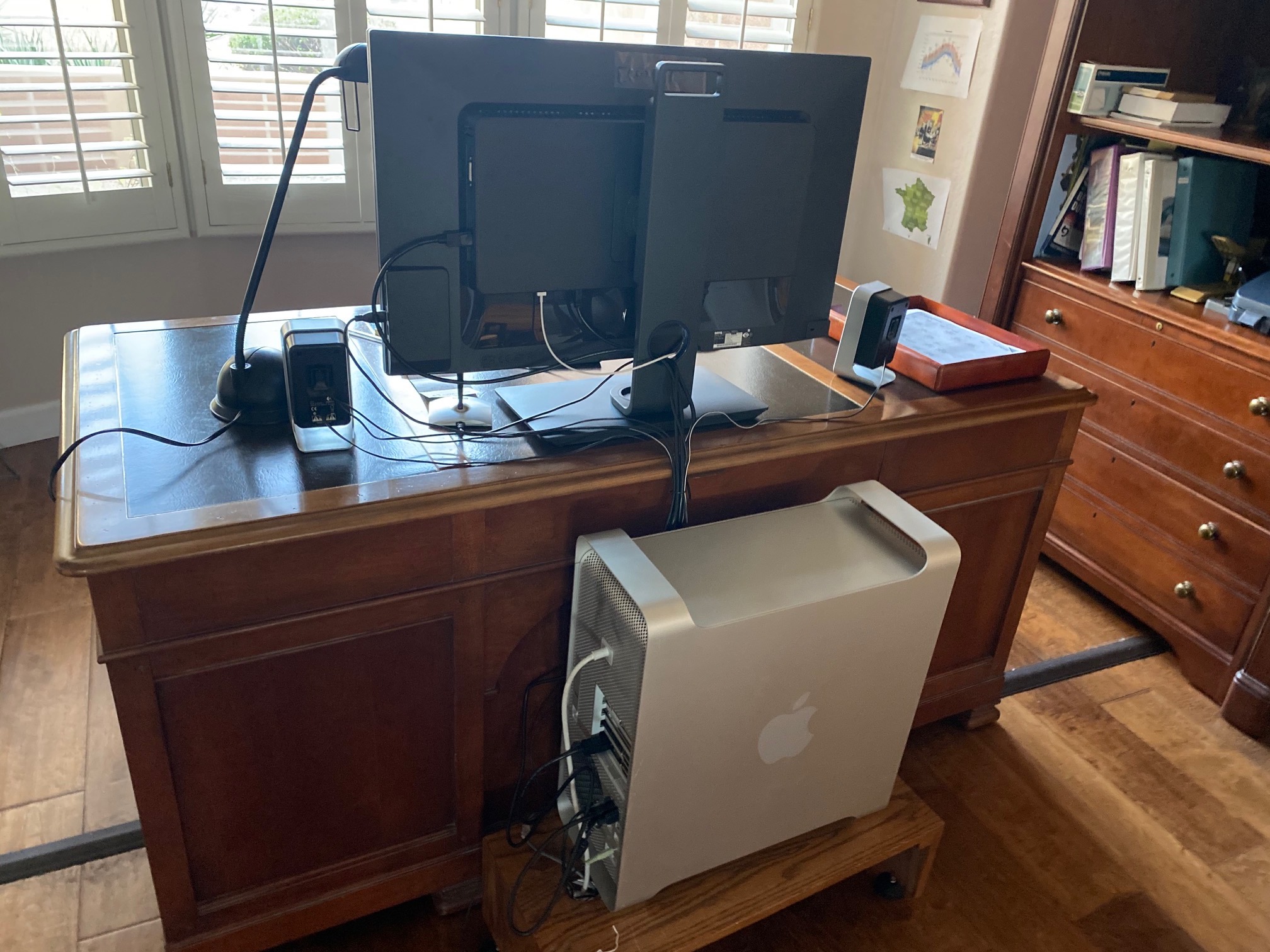
Did I mention it’s ugly? The QR attachment for the stand conceals standard VESA wall mounting threads.
